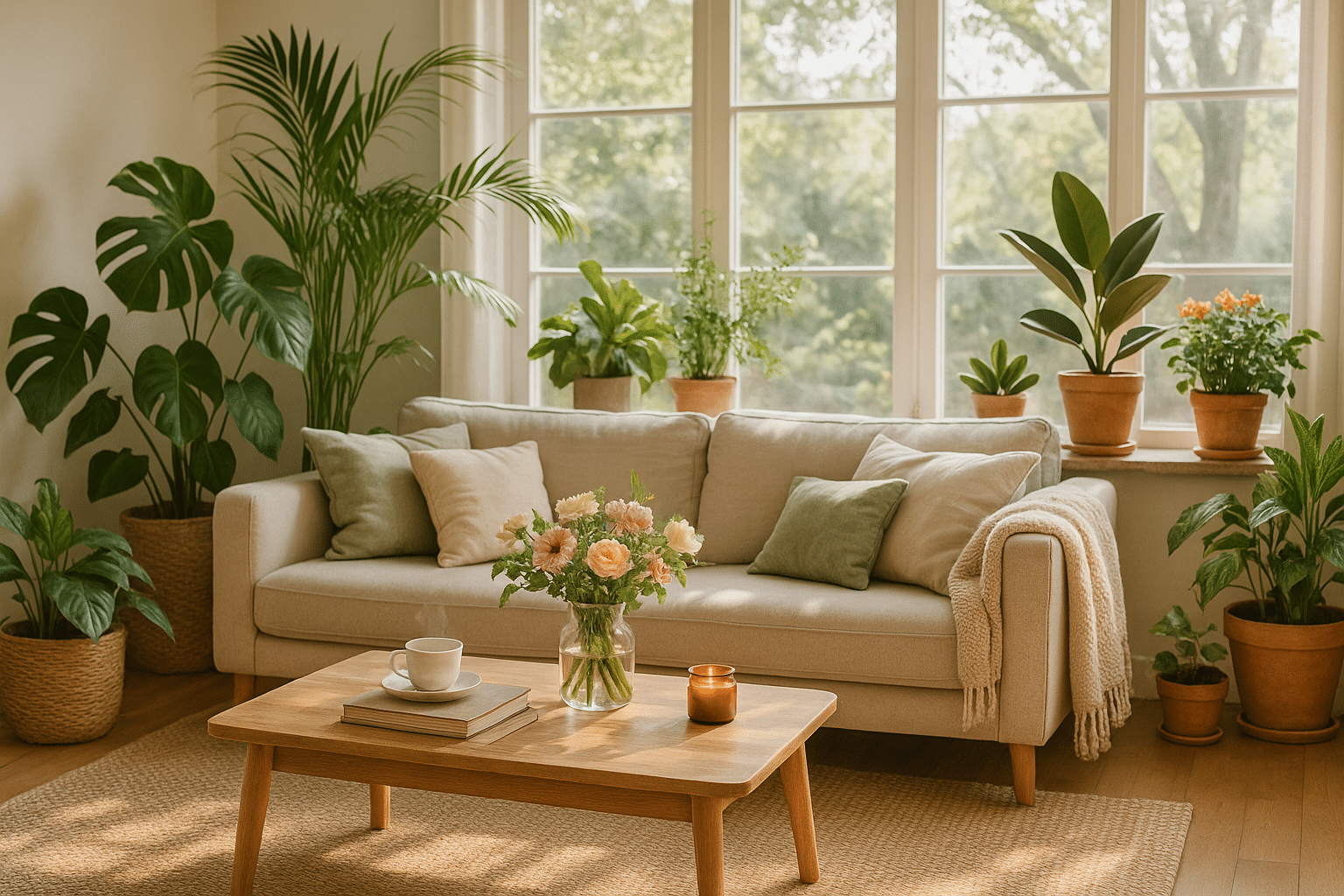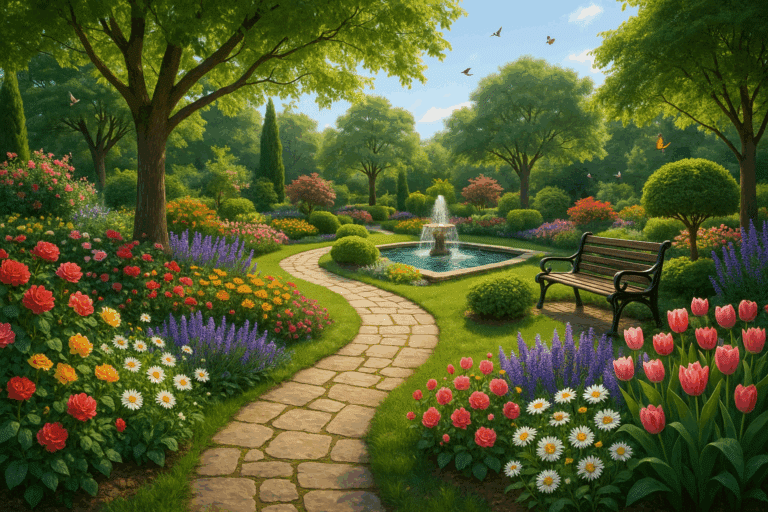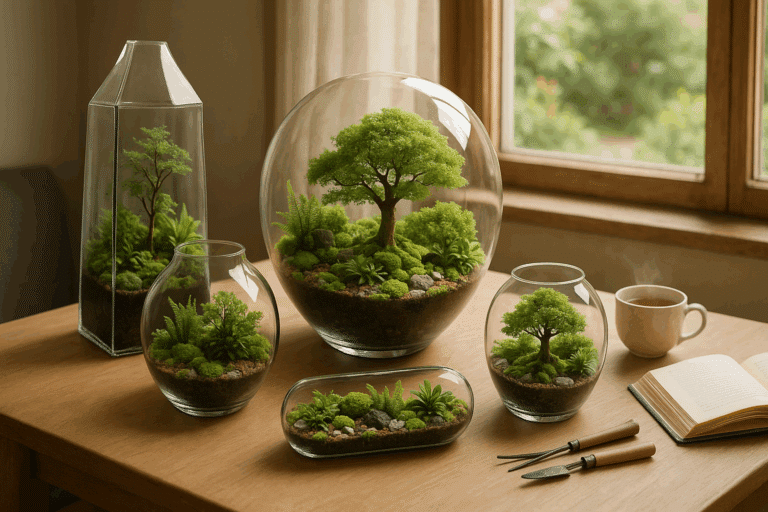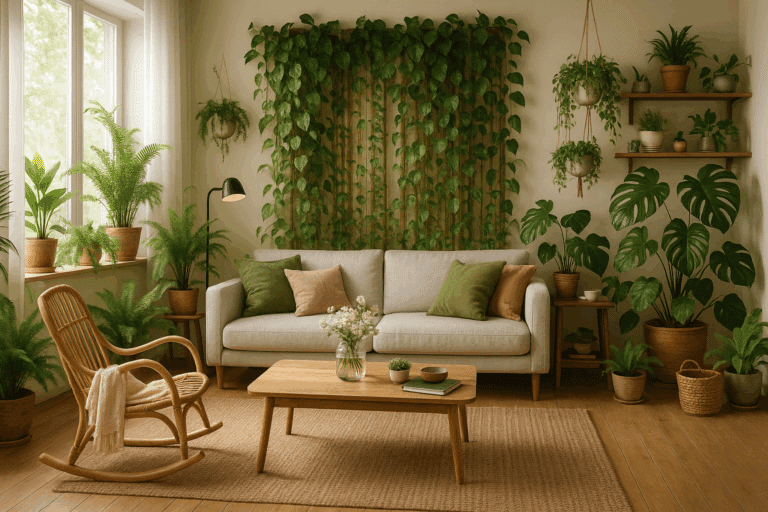Many of us yearn for a tranquil oasis to retreat to at the end of the day, a place where we can recharge, reflect and rejuvenate. And transforming your space into such a serene haven is not as complex as it may seem. With the right approach, a few simple tweaks can have a profound impact on the ambiance of your home, turning it into the sanctuary you’ve always dreamt of. In this comprehensive guide, I will walk you through some effective tips on how to transform your space into a tranquil oasis. 🌱🏡
Why a Tranquil Home Environment Matters
Before we delve into the ‘how’, it’s crucial to understand the ‘why’. Your home is much more than just a physical space – it’s an extension of you, a reflection of your personality, tastes and values. A tranquil home environment can boost your mood, enhance your productivity and even contribute to your overall well-being. A sanctuary is not merely about aesthetics, but more importantly, it’s about creating an environment that resonates with you at a deeper level, making you feel calm, comfortable and connected. 🏡💆🏽♂️
Key Elements of a Tranquil Oasis
A tranquil oasis is characterized by a few key elements, such as harmony, balance, simplicity and a connection with nature. It’s about decluttering your space, both physically and metaphorically, and introducing elements that exude calmness and serenity. Each of these elements will be explored in-depth in the subsequent sections, providing you with actionable strategies and tips to grow your sanctuary. 🍃🧘♀️
What to Expect from This Guide
In the following sections, we’ll delve into various aspects of creating a tranquil oasis. We’ll explore the role of color psychology in establishing a soothing atmosphere, and how you can harness its power to influence your mood and emotions. We’ll also discuss the importance of decluttering and organization in creating a tranquil space, and provide tips on how to maintain a clutter-free environment.
We’ll talk about the transformative power of nature and how you can bring a piece of it into your home through indoor plants and natural elements. We’ll explore how light can alter the mood of a space, and discuss different lighting options and techniques to create a warm, calming ambiance. Last but not least, we’ll delve into the concept of mindful decor, and how you can create a living space that truly resonates with you and your unique personality. 🎨🌿💡
Whether you’re a homeowner seeking to revamp your living space, a tenant trying to make your rented apartment feel more like home, or simply someone with an interest in interior design and home improvement, this guide will provide you with the insights and inspiration you need to transform your space into a tranquil oasis.
So, are you ready to embark on this transformative journey? Let’s dive right in and start growing your sanctuary. 🌱💚
The Nurturing Potential of Indoor Gardening: Finding Calm in Chaos
In today’s world of relentless hustle, everyone could use a tranquil oasis. Enter indoor gardening—a realm of serene greens and flourishing flora that offers a peaceful retreat within your home. Whether you’re a seasoned horticulturist or a budding plant parent, you can cultivate a mini-sanctuary using simple yet effective gardening techniques. 🌿
Indoor gardening does more than provide visual appeal—it promotes mental wellness, purifies air, and instils a sense of fulfilment. But how do you get started? What are the best plants for indoor gardening? And how can you ensure they thrive? Let’s unearth the answers.
For those interested in visual learning, I recommend “Indoor Gardening for Beginners: How to Start and Types of Indoor Gardening” by the channel ‘Epic Gardening’. It offers an engaging, informative take on indoor gardening basics. So, grab your gardening gloves, and let’s get planting!
Choosing the Right Plants: The Building Blocks of Your Indoor Garden
Not all plants are created equal—especially when it comes to growing them indoors. Some require more light, others need less water, and a few are notoriously picky. So, which are the best indoor plants to turn your space into a tranquil oasis? Here are some top contenders:
- Snake Plant: Known for its resilience and air-purifying qualities.
- Peace Lily: This elegant plant can thrive even in low-light conditions.
- Spider Plant: A low-maintenance plant that can adapt to a range of environments.
- English Ivy: An ideal plant if you’re aiming for that cascading greenery effect.
- Rubber Plant: If you have plenty of space and love a dramatic leaf, this is the plant for you.
Once you’ve decided on your plant selection, it’s time to understand their specific care needs. Remember, the key to a thriving indoor garden is balance—too much or too little of anything can tip the scales.
Understanding Plant Care Essentials: Sunshine, Soil, and H2O
Each plant species has unique needs, but there are some common elements crucial for their growth: light, water, and soil. Understanding these elements is the first step towards a flourishing indoor garden.
Let There Be Light: Understanding Your Plant’s Light Requirements
All plants need light—it’s essential for photosynthesis, the process through which plants produce food. However, the intensity and duration of light required can vary dramatically. For instance, succulents love basking in bright light for most of the day, while ferns can do with dappled light. A pro tip is to place your plants near north or south-facing windows for optimal light exposure. If natural light is scarce, consider investing in grow lights.
Quenching Thirst: How Much Water Does Your Plant Need?
Overwatering is one of the leading causes of plant death. It’s crucial to know how much water your plant needs and how often. While succulents and cacti prefer their soil to dry out between watering, tropical plants like the peace lily prefer consistently moist soil. Always check the soil before watering—if the top inch is dry, it’s usually safe to water.
The Right Environment: Selecting the Ideal Soil and Pot
Choosing the right soil and pot is as important as selecting the plant itself. Most indoor plants do well in general-purpose potting soil, but some like orchids require a specialized mix. Additionally, ensure your pot has sufficient drainage to avoid water-logging. Remember, a healthy plant starts with a healthy root system.
Mastering Indoor Gardening Techniques: Growth, Pruning, and Pest Control
While the right conditions can set your indoor garden up for success, there are specific techniques you can employ to ensure your plants not only survive but thrive. From correct pruning methods to effective pest control strategies, these gardening techniques are the secret to transforming your space into a tranquil oasis.
Boosting Growth: Fertilizing and Repotting Your Plants
Just like us, plants need nutrients to grow. Most indoor plants benefit from regular fertilizing, especially during the growing season. Choose a balanced fertilizer and always follow the manufacturer’s instructions. Similarly, repotting is necessary as your plant grows. Choose a pot that’s one size larger than the current one and ensure it has adequate drainage.
Keeping Things Tidy: Pruning and Cleaning Your Plants
Regular pruning helps control growth and maintain plant health. Remove any dead or yellowing leaves and prune to maintain the desired shape. Also, remember to clean your plants—the dust on the leaves can block light absorption. A simple wipe with a damp cloth can do the trick.
Protecting Your Plants: Pest Control and Disease Prevention
Indoor plants can be susceptible to pests and diseases. Common culprits include spider mites, aphids, and mealybugs. Keep an eye out for signs of distress such as yellowing leaves or slow growth. Most pests can be managed by regular cleaning and using a mild insecticidal soap. For more severe infestations, you may need to use specific pest control products.
Final Flourish: Curating Your Indoor Garden for Maximum Tranquility
While the health of your plants is paramount, how you display them can significantly impact the overall tranquility of your space. After all, you’re not just growing plants—you’re curating a sanctuary.
Creating Balance: Plant Placement and Aesthetics
When arranging your plants, think about balance and aesthetics. Different plants offer different visual interest—some are tall and upright, others are sprawling, and a few have captivating leaf patterns. Experiment with different arrangements until you find one that brings you peace. Also, consider the pot design and color—these can add a significant visual appeal.
Adding Personal Touches: Accessories and Decor
Finally, consider adding personal touches. Maybe it’s a cherished heirloom pot, a cute garden gnome, or a DIY plant stand. These little additions can make your indoor garden uniquely yours, enhancing the tranquility of your space.
With these tips and a bit of patience, you can transform your home into a tranquil oasis—an indoor garden that soothes your soul and brings you joy. Happy gardening! 🌱

Conclusion
In conclusion, this in-depth exploration into the intricacies of Information Technology and Engineering has aimed to demystify a complex field that is pivotal to our daily lives. With this knowledge, you’re better equipped to understand the core principles that underpin these disciplines and how they’re applied to solve real-world problems.
The journey began with a focus on the fundamentals of software engineering. It was made clear that software engineering is not just about writing code. It’s a field that requires a systematic and disciplined approach to the design, development, operation, and maintenance of software systems.
Then, the spotlight was shifted to Information Technology, providing a deep dive into how IT professionals use hardware, software, networks, and databases to solve problems. They play a critical role in keeping our digital world running smoothly and efficiently, whether it’s managing data, protecting against cyber threats, or developing new software applications.
Moreover, the article highlighted the integral relationship between IT and engineering. One simply cannot exist without the other. Engineering provides the necessary hardware that IT needs to function, while IT enables engineering systems to operate more effectively and efficiently.
The importance of continual learning and staying updated in these fast-paced fields was also emphasized. With technological advancements happening at a breakneck pace, professionals must remain adaptable and ready to learn new tools and techniques.
To delve deeper into these topics, there are countless resources available online. A few reputable ones include [MIT OpenCourseWare](https://ocw.mit.edu/index.htm) and [Stanford Online](https://online.stanford.edu/) for free courses, and [Stack Overflow](https://stackoverflow.com/) for community-led discussions. For literature, [ACM Digital Library](https://dl.acm.org/) and [IEEE Xplore](https://ieeexplore.ieee.org/Xplore/home.jsp) are great sources for academic papers and articles.
I hope this information sparks your curiosity to learn more about the fascinating worlds of IT and Engineering. I urge you to share this article with your friends and colleagues who might find it useful. Remember, knowledge is power, and sharing it is empowering!💡
I welcome any comments or questions you may have on this topic. If there are any specific areas you’d like me to explore further, please let me know in the comments section below.
Stay curious, keep learning, and until next time – Happy exploring!💼🚀🔍
Remember to subscribe to our newsletter for more engaging and enlightening articles delivered directly to your inbox.📨
References:
[MIT OpenCourseWare](https://ocw.mit.edu/index.htm)
[Stanford Online](https://online.stanford.edu/)
[Stack Overflow](https://stackoverflow.com/)
[ACM Digital Library](https://dl.acm.org/)
[IEEE Xplore](https://ieeexplore.ieee.org/Xplore/home.jsp)



